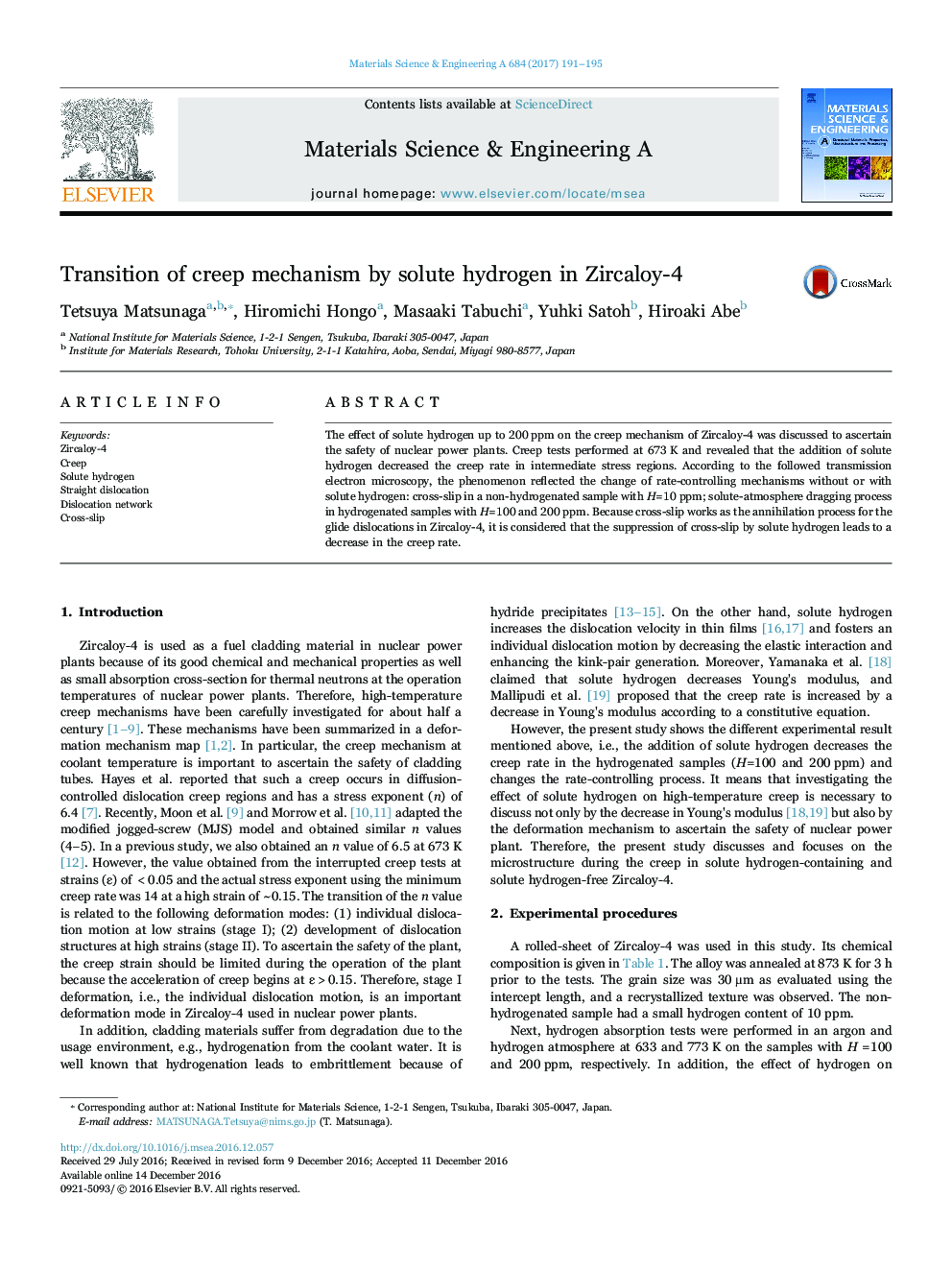| Article ID | Journal | Published Year | Pages | File Type |
|---|---|---|---|---|
| 5456303 | Materials Science and Engineering: A | 2017 | 5 Pages |
Abstract
The effect of solute hydrogen up to 200Â ppm on the creep mechanism of Zircaloy-4 was discussed to ascertain the safety of nuclear power plants. Creep tests performed at 673Â K and revealed that the addition of solute hydrogen decreased the creep rate in intermediate stress regions. According to the followed transmission electron microscopy, the phenomenon reflected the change of rate-controlling mechanisms without or with solute hydrogen: cross-slip in a non-hydrogenated sample with H=10Â ppm; solute-atmosphere dragging process in hydrogenated samples with H=100 and 200Â ppm. Because cross-slip works as the annihilation process for the glide dislocations in Zircaloy-4, it is considered that the suppression of cross-slip by solute hydrogen leads to a decrease in the creep rate.
Related Topics
Physical Sciences and Engineering
Materials Science
Materials Science (General)
Authors
Tetsuya Matsunaga, Hiromichi Hongo, Masaaki Tabuchi, Yuhki Satoh, Hiroaki Abe,
